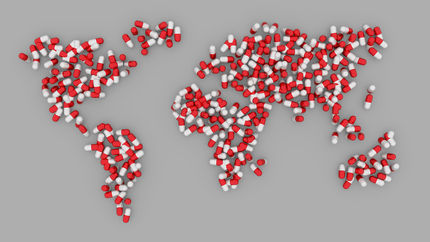Developing Countries and Generic Drug Firms Shaking Up the Pharma Industry
Advertisement
Constricted budgets, the ‘patent cliff’ and the rise of emerging economies are forcing pharmaceutical companies to seriously reassess business strategies, finds a new report by healthcare industry analyst firm GlobalData.
According to GlobalData’s 2012 Pharmaceutical Benchmark Report, the major pharmaceutical players are increasingly looking outside of the developed markets in the search for sales growth. The maturity of the US drug market, combined with the surge in generic drug sales and an uncertain regulatory environment, has contributed to slower revenue growth from the top 25 pharmaceutical companies, increasing by only 2.6% in 2011 to $259 billion.
Moreover, the European sovereign debt crisis of countries such as Portugal, Ireland, Spain, and the fear of default from Greece are also making the European drug market an unstable source of revenue for pharmaceutical firms.
In contrast to the pedestrian growth displayed in these markets, the emerging economies, including the BRIC nations, were much more dynamic. The top companies’ revenue growth rate for 2011 in these regions was 13.4%, almost double that of the average corporate increase of 7.8%. GlobalData expects these countries to remain an attractive proposition for pharmaceutical firms due to rising incomes, expanding access to healthcare and the subsidized nature of central planning governments.
Drug companies have been closely examining every area of business, in an effort to maximize profit in these uncertain times. While R&D spending increased 3.5% year-to-year to $97.9 billion in 2011 as a percentage of revenue, R&D budgets have been slashed as the industry focuses on the development of medications most likely to attain commercial success.
In an environment of declining innovation and in the shadow of the ‘patent cliff’, it is perhaps natural that the pharmaceutical industry’s generic drug manufacturers have grown in prominence. The top five generic companies generated $31 billion in revenue in 2011 – an 11.3% increase over the previous year.
Teva Pharmaceutical Industries posted $10.1 billion in revenue in 2011. As a result of increased competition for generic drugs in the US, Teva looked to grow through the acquisition of drug makers in Peru and Japan to offset declining generic drug sales in the US.
Closely following Teva was Sandoz, the generic subsidiary of Novartis, who recorded $9.4 billion in revenue in 2011, an increase of 10.3% when compared to 2010. Contributing to the revenue growth was Novartis’ $12.9 billion purchase of Alcon, a global leader in eye-care products, which increased the company’s presence in the US generic drug market.
While Mylan remained the third largest drug maker by revenue in 2011, with revenue of $5.5 billion, GlobalData expects Mylan’s position to be surpassed by Watson, which has been on an acquisition spree, acquiring Swiss generic drug maker Actavis for $5.9 billion in April 2012.






















































